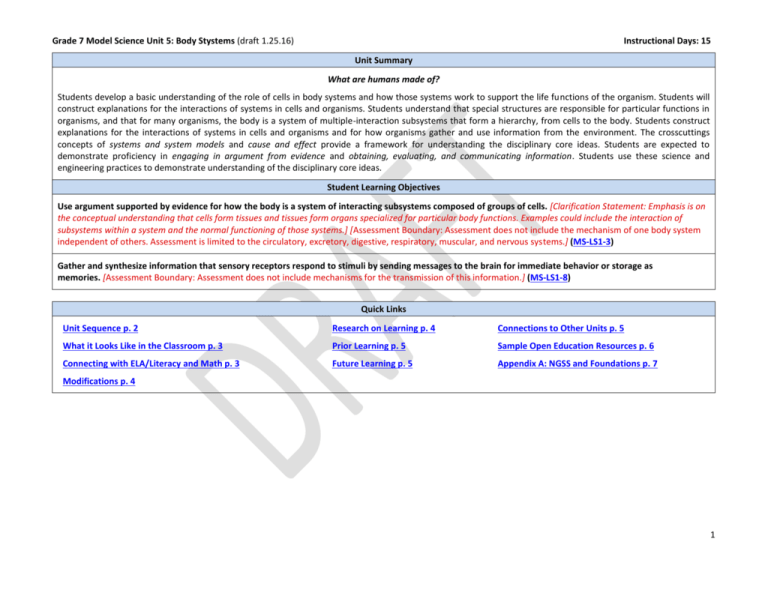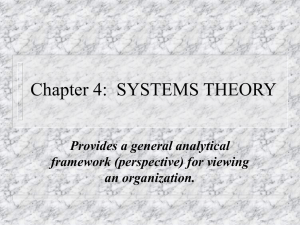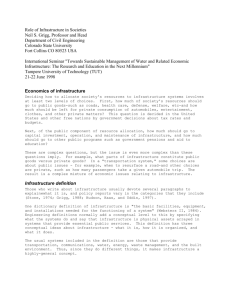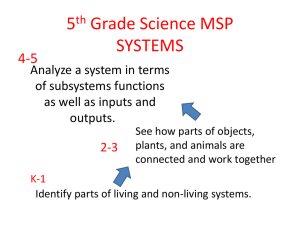Word
advertisement

Grade 7 Model Science Unit 5: Body Stystems (draft 1.25.16) Instructional Days: 15 Unit Summary What are humans made of? Students develop a basic understanding of the role of cells in body systems and how those systems work to support the life functions of the organism. Students will construct explanations for the interactions of systems in cells and organisms. Students understand that special structures are responsible for particular functions in organisms, and that for many organisms, the body is a system of multiple-interaction subsystems that form a hierarchy, from cells to the body. Students construct explanations for the interactions of systems in cells and organisms and for how organisms gather and use information from the environment. The crosscuttings concepts of systems and system models and cause and effect provide a framework for understanding the disciplinary core ideas. Students are expected to demonstrate proficiency in engaging in argument from evidence and obtaining, evaluating, and communicating information. Students use these science and engineering practices to demonstrate understanding of the disciplinary core ideas. Student Learning Objectives Use argument supported by evidence for how the body is a system of interacting subsystems composed of groups of cells. [Clarification Statement: Emphasis is on the conceptual understanding that cells form tissues and tissues form organs specialized for particular body functions. Examples could include the interaction of subsystems within a system and the normal functioning of those systems.] [Assessment Boundary: Assessment does not include the mechanism of one body system independent of others. Assessment is limited to the circulatory, excretory, digestive, respiratory, muscular, and nervous systems.] (MS-LS1-3) Gather and synthesize information that sensory receptors respond to stimuli by sending messages to the brain for immediate behavior or storage as memories. [Assessment Boundary: Assessment does not include mechanisms for the transmission of this information.] (MS-LS1-8) Quick Links Unit Sequence p. 2 Research on Learning p. 4 Connections to Other Units p. 5 What it Looks Like in the Classroom p. 3 Prior Learning p. 5 Sample Open Education Resources p. 6 Connecting with ELA/Literacy and Math p. 3 Future Learning p. 5 Appendix A: NGSS and Foundations p. 7 Modifications p. 4 1 Grade 7 Model Science Unit 5: Body Stystems (draft 1.25.16) Instructional Days: 15 Unit Sequence Part A: What is the evidence that a body is actually a system of interacting subsystems composed of groups of interacting cells? Concepts Formative Assessment In multicellular organisms, the body is a system of multiple, interacting subsystems. Subsystems are groups of cells that work together to form tissues. Organs are groups of tissues that work together to perform a particular body function. Tissues and organs are specialized for particular body functions. Systems may interact with other systems. Systems may have subsystems and be part of larger complex systems. Interactions are limited to the circulatory, excretory, digestive, respiratory, muscular, and nervous systems. Scientists and engineers are guided by habits of mind such as intellectual honesty, tolerance of ambiguity, skepticism, and openness to new ideas. Students who understand the concepts are able to: Use an oral and written argument supported by evidence to support or refute an explanation or a model of how the body is a system of interacting subsystems composed of groups of cells. Unit Sequence Part B: How do organisms receive and respond to information from their environment? Concepts Sense receptors respond to different inputs (electromagnetic, mechanical, chemical). Sense receptors transmit responses as signals that travel along nerve cells to the brain. Signals are then processed in the brain. Brain processing results in immediate behaviors or memories. Cause-and-effect relationships may be used to predict response to stimuli in natural systems. Formative Assessment Students who understand the concepts are able to: Gather, read, and synthesize information from multiple appropriate sources about sensory receptors’ response to stimuli. Assess the credibility, accuracy, and possible bias of each publication and methods used. Describe how publications and methods used are supported or not supported by evidence. 2 Grade 7 Model Science Unit 5: Body Stystems (draft 1.25.16) Instructional Days: 15 What It Looks Like in the Classroom Within this unit, students will use informational text and models to support their understanding that the body is a system of interacting subsystems. Instruction should begin with students understanding that the cell is a specialized structure that is a functioning system. Students will need to understand that different types of cells have different functions; therefore, each cell system is specialized to perform its particular function. Building on this understanding, students learn that different types of cells serve as subsystems for larger systems called tissues. Groups of specialized tissues serve as subsystems for organs that then serve as subsystems for body systems such as the circulatory, excretory, digestive, respiratory, muscular, and nervous systems. Students need to understand how each body system interacts with other body systems. Emphasis is on the conceptual understanding that each system and subsystem is specialized for particular body functions; it does not include the mechanisms of one body system independent of others. As part of their investigation of how body systems are interrelated, students should use variables to represent two quantities that describe how the inputs or outputs of one system change in relationship to another. They should write an equation to express one quantity, thought of as the dependent variable, in terms of the other quantity, thought of as the independent variable; analyze the relationship using graphs and tables; and relate these to the equation. For example, students can find the relationship between increased activity of the muscular system and the related increase in the activity of the circulatory or respiratory system and express this relationship as an equation. Students will demonstrate their understanding of this concept by writing an argument, supported by evidence, to support an explanation of how the body is a system of interacting subsystems. As part of their preparation for this written argument, students will read science resources and analyze the evidence used to support arguments in these resources. While gathering evidence, it is important that students connect to the nature of science by demonstrating scientific habits. They should be sure to display intellectual honesty by ensuring that whenever they cite specific textual information and quote or paraphrase the data and conclusions of others, they avoid plagiarism and provide basic bibliographic information for sources. Students will deepen their understanding of subsystems by gathering and synthesizing information about sensory receptors. Students will understand that sensory receptors respond to stimuli by sending messages to the brain for immediate behavior or storage as memories. Each sensory receptor responds to different inputs (electromagnetic, mechanical, chemical), transmitting them as signals that travel along nerve cells to the brain. Each response can be examined as a cause-and-effect relationship that can be used to predict response to stimuli in natural systems. Each step in the stimulus/response pathway can be connected to students’ previous study of systems and subsystems. For example, the nervous system includes receptors that are subsystems that respond to stimuli by sending messages to the brain. Using multiple appropriate sources, students will read and synthesize information and will assess the credibility, accuracy, and possible bias of publications and methods used, and describe how the information they read is or is not supported by evidence. For example, students could participate in class discussions in which they can investigate whether information they have read in publications agree with scientific findings or seem to be biased in order to advertise a product or support a position. Connecting with English Language Arts/Literacy and Mathematics English Language Arts Cite specific textual evidence to support analysis of science and technical texts that provide evidence for how the body is a system of interacting subsystems composed of cells. Trace and evaluate a text’s argument that the body is a system of interacting subsystems composed of cells, distinguishing claims that are supported by reasons 3 Grade 7 Model Science Unit 5: Body Stystems (draft 1.25.16) Instructional Days: 15 and evidence from claims that are not. Write arguments, supported by evidence, for how the body is a system of interacting subsystems composed of groups of cells. Gather relevant information concerning how sensory receptors function by responding to stimuli, then sending messages to the brain, which responds immediately through some form or behavior or by storing the messages as memory. Quote or paraphrase the data and conclusions of others while avoiding plagiarism and providing basic bibliographic information for sources. Mathematics N/A Modifications (Note: Teachers identify the modifications that they will use in the unit. See NGSS Appendix D: All Standards, All Students/Case Studies for vignettes and explanations of the modifications.) Structure lessons around questions that are authentic, relate to students’ interests, social/family background and knowledge of their community. Provide students with multiple choices for how they can represent their understandings (e.g. multisensory techniques-auditory/visual aids; pictures, illustrations, graphs, charts, data tables, multimedia, modeling). Provide opportunities for students to connect with people of similar backgrounds (e.g. conversations via digital tool such as SKYPE, experts from the community helping with a project, journal articles, and biographies). Provide multiple grouping opportunities for students to share their ideas and to encourage work among various backgrounds and cultures (e.g. multiple representation and multimodal experiences). Engage students with a variety of Science and Engineering practices to provide students with multiple entry points and multiple ways to demonstrate their understandings. Use project-based science learning to connect science with observable phenomena. Structure the learning around explaining or solving a social or community-based issue. Provide ELL students with multiple literacy strategies. Collaborate with after-school programs or clubs to extend learning opportunities. Restructure lesson using UDL principals (http://www.cast.org/our-work/about-udl.html#.VXmoXcfD_UA) Research on Student Learning Preliminary research indicates that it may be easier for students to understand that the cell is the basic unit of structure (which they can observe) than that the cell is the basic unit of function (which has to be inferred from experiments). Research also shows that high-school students may hold various misconceptions about cells after traditional instruction (NSDL, 2015). 4 Grade 7 Model Science Unit 5: Body Stystems (draft 1.25.16) Instructional Days: 15 Prior Learning By the end of Grade 5, students understand that: Plants and animals have both internal and external structures that serve various functions in growth, survival, behavior, and reproduction. Future Learning Life science Systems of specialized cells within organisms help the organisms perform the essential functions of life. All cells contain genetic information in the form of DNA molecules. Genes are regions in DNA that contain the instructions that code for the formation of proteins, which carry out most of the work of cells. Multicellular organisms have a hierarchical structural organization, in which any one system is made up of numerous parts and is itself a component of the next level. Feedback mechanisms maintain a living system’s internal conditions within certain limits and mediate behaviors, allowing the living systems to remain alive and functional even as external conditions change, within some range. Feedback mechanisms can encourage (through positive feedback) or discourage (through negative feedback) what is going on inside the living system. Connections to Other Units Grade 7 Unit 4: Structure and Function All living things are made up of cells, which is the smallest unit that can be said to be alive. An organism may consist of one single cell (unicellular) or many different numbers and types of cells (multicellular). Within cells, special structures are responsible for particular functions, and the cell membrane forms the boundary that controls what enters and leaves the cell. Grade 7 Unit 6: Inheritance and Variation of Traits Genes are located in the chromosomes of cells, with each chromosome pair containing two variants of each of many distinct genes. Each distinct gene chiefly controls the production of specific proteins, which in turn affects the traits of the individual. Changes (mutations) to genes can result in changes to proteins, which can affect the structures and functions of the organism and thereby change traits. Variations of inherited traits between parent and offspring arise from genetic differences that result from the subset of chromosomes (and therefore genes) inherited. In sexually reproducing organisms, each parent contributes half of the genes acquired (at random) by the offspring. Individuals have two of each chromosome and hence two alleles of each gene, one acquired from each parent. These versions may be identical or may differ from each other. In addition to variations that arise from sexual reproduction, genetic information can be altered because of mutations. Though rare, mutations may result in 5 Grade 7 Model Science Unit 5: Body Stystems (draft 1.25.16) Instructional Days: 15 changes to the structure and function of proteins. Some changes are beneficial, others harmful, and some neutral to the organism. Sample of Open Education Resources NOVA body + brain: This link will take you to NOVA’s homepage for journal articles, videos, and interactives that can be used to teach the body. Animal Communications: All animal species have some capacity for communication but communication abilities range from very simple to extremely complex, depending upon the species. Communication is influenced by a species' genetic makeup, its environment, and the numerous ways by which animals and humans respond to and adapt to their surroundings. 6 Grade 7 Model Science Unit 5: Body Stystems (draft 1.25.16) Instructional Days: 15 Appendix A: NGSS and Foundations for the Unit Use argument supported by evidence for how the body is a system of interacting subsystems composed of groups of cells. [Clarification Statement: Emphasis is on the conceptual understanding that cells form tissues and tissues form organs specialized for particular body functions. Examples could include the interaction of subsystems within a system and the normal functioning of those systems.] [Assessment Boundary: Assessment does not include the mechanism of one body system independent of others. Assessment is limited to the circulatory, excretory, digestive, respiratory, muscular, and nervous systems.] (MS-LS1-3) Gather and synthesize information that sensory receptors respond to stimuli by sending messages to the brain for immediate behavior or storage as memories. [Assessment Boundary: Assessment does not include mechanisms for the transmission of this information.] (MS-LS1-8) The performance expectations above were developed using the following elements from the NRC document A Framework for K-12 Science Education: Crosscutting Concepts Science and Engineering Practices Disciplinary Core Ideas Obtaining, Evaluating, and Communicating Information Gather, read, and synthesize information from multiple appropriate sources and assess the credibility, accuracy, and possible bias of each publication and methods used, and describe how they are supported or not supported by evidence. (MS-LS1-8) Engaging in Argument from Evidence Use an oral and written argument supported by evidence to support or refute an explanation or a model for a phenomenon. (MS-LS1-3) LS1.A: Structure and Function Systems and System Models In multicellular organisms, the body is a system of multiple interacting subsystems. These subsystems are groups of cells that work together to form tissues and organs that are specialized for particular body functions. (MSLS1-3) Cause and Effect LS1.D: Information Processing Each sense receptor responds to different inputs (electromagnetic, mechanical, chemical), transmitting them as signals that travel along nerve cells to the brain. The signals are then processed in the brain, resulting in immediate behaviors or memories. (MS-LS1-8) Systems may interact with other systems; they may have sub-systems and be a part of larger complex systems. (MS-LS1-3) Cause and effect relationships may be used to predict phenomena in natural systems. (MS-LS18) -----------------------------------Connections to Nature of Science Science is a Human Endeavor Scientists and engineers are guided by habits of mind such as intellectual honesty, tolerance of ambiguity, skepticism, and openness to new ideas. (MS-LS1-3) 7 Grade 7 Model Science Unit 5: Body Stystems (draft 1.25.16) English Language Arts Instructional Days: 15 Mathematics Cite specific textual evidence to support analysis of science and technical texts. (MS-LS1-3) RST.6-8.1 Trace and evaluate the argument and specific claims in a text, distinguishing claims that are supported by reasons and evidence from claims that are not.(MSLS1-3) RI.6.8 Write arguments focused on discipline content. (MS-LS1-3) WHST.6-8.1 N/A Gather relevant information from multiple print and digital sources, using search terms effectively; assess the credibility and accuracy of each source; and quote or paraphrase the data and conclusions of others while avoiding plagiarism and following a standard format for citation.(MS-LS1-8) WHST.6-8.8 8








